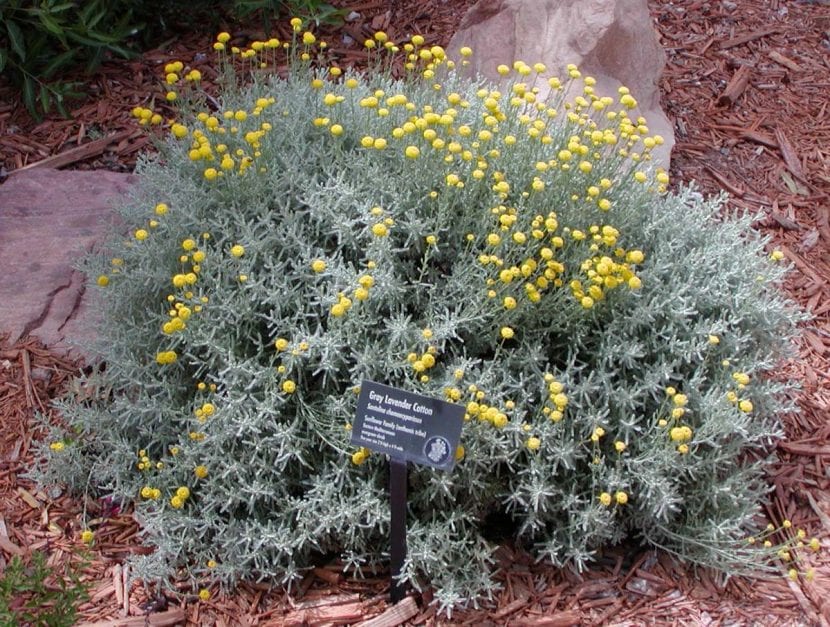
La Santolina is a beautiful plant that, in addition to having a very interesting ornamental value, has medicinal properties that cannot be ignored. It is very easy to care for and maintain, so much so that it is not only suitable for beginners but, if it is planted in the ground, from the second year on it will hardly need any attention.
If you are liking what you are reading, you have to know that there is still more. This wonderful plant keeps secrets, but we are going to reveal all of them in this special article.
Origin and characteristics of Santolina
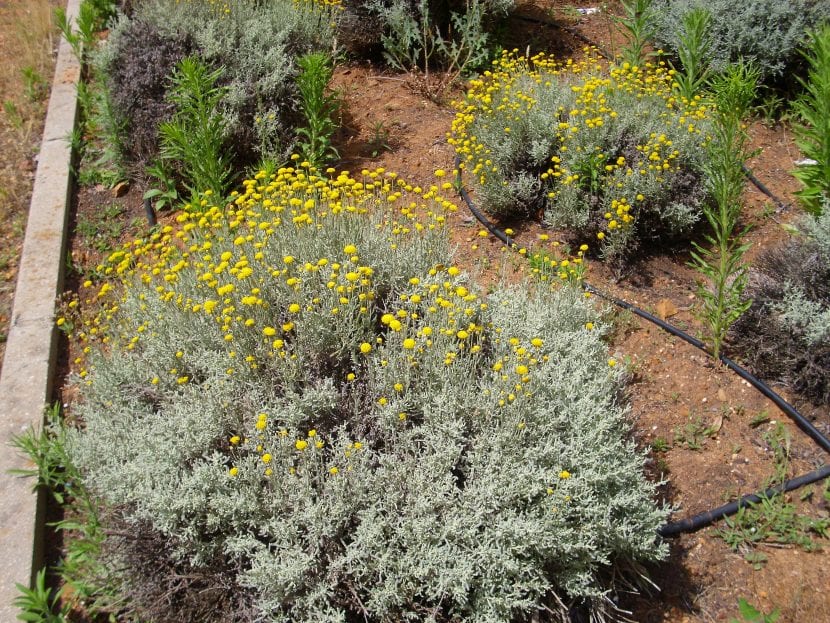
Our protagonist, whose scientific name is Santolina chamaecyparissus, is a subshrub belonging to the Asteraceae family. Probably, this name does not sound like much to you, but perhaps these tell you something else: female abrotano, cypress, worm grass, box, wardrobe, manzanillera, ontina of cabezuelas, Aragón tea, or Mahón chamomile.
It grows naturally in southern Europe, North Africa and in North America, on clay or stony slopes. It is an easy plant to distinguish: grows to a height of between 20 and 70cm, and has numerous thin stems from which the leaves grow, which are grayish-green. These are narrow, linear, divided, and very aromatic. Its smell is similar to that of chamomile, although it is not very unpleasant. During the summer, hemispherical heads with yellow flowers sprout.
Care you need
To have a perfectly healthy Santolina, the following must be taken into account:
Location
It is important to get direct sunlight, ideally throughout the day. In semi-shade it could have poor growth. It is also not recommended to have it indoors, except if you have a room in which a lot of natural light enters.
Soil or substrate
Regardless of whether you want to have it in a pot or in the garden, the land has to have good drainage. In the event that this is not the case, that is, the water that we add takes more than 2 minutes to filter, it must be mixed with perlite, pumice or any other similar material in equal parts.
Irrigation
Infrequent. It will be enough once or twice a week. If we have a plate underneath, we will remove the excess water ten minutes after watering.
Subscriber
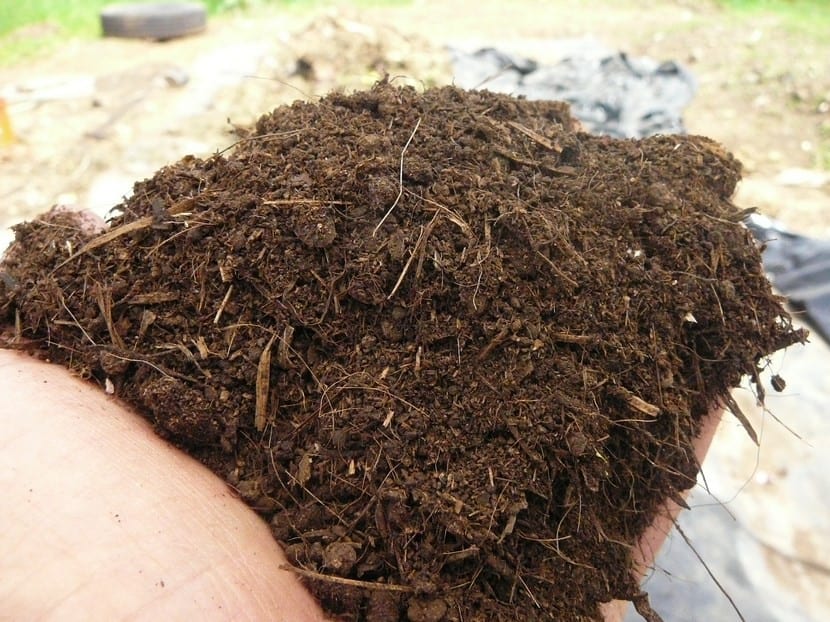
As it is a plant that can be used as medicinal, it is advisable to pay it using Organic fertilizersand guano, manure o humus. If it is potted, we recommend using them in liquid format so as not to hinder drainage.
Planting or transplanting time
En spring, when the risk of frost has passed.
Pruning
Act quickly. remove withered flowers, and go trimming the branches so that the plant can look very pretty.
Multiplication
If we want to get new copies, we can do it from tender cuttings in spring and mature cuttings in fall. We impregnate the base with rooting hormones, and plant them in a pot with porous substrate, like black peat mixed with perlite in equal parts.
Pests
It is susceptible to attack by aphids, which can be fought with neem oil.
Rusticity
It can be grown without problems outdoors in areas where frosts of up to -5ºC.
Uses of santolina
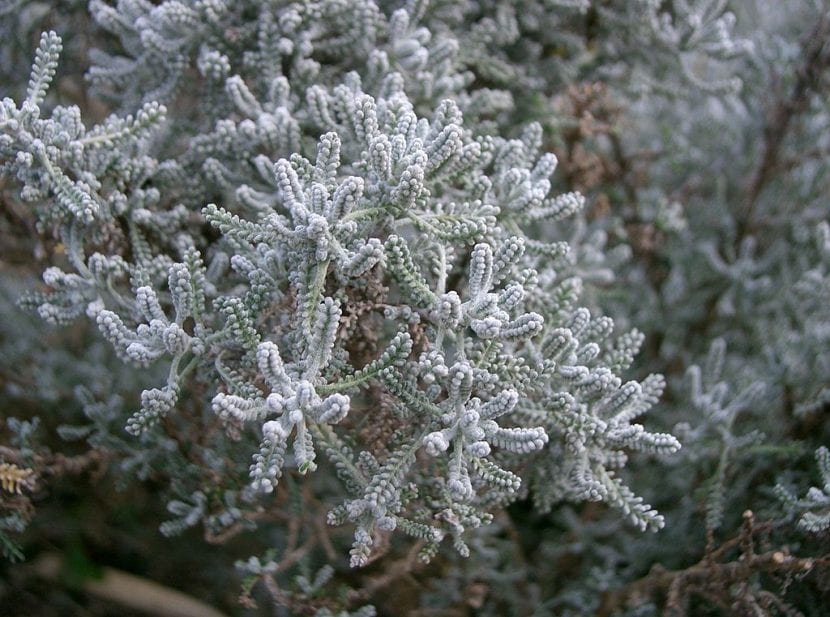
Santolina has several uses for humans, which are:
Ornamental
Can be planted in gardens, either to delimit paths, together with other plants that grow to the same height, or to give a different color. In a pot it can be decorated on the terrace, balcony or any corner.
Medicinal
This is a very interesting plant that helps us protect our health, for example fighting worm infections, that is to say, worms and worms. It is a natural dewormer that we cannot stop having, as it will control and eliminate all types of parasites.
In addition, it can be used as a complementary treatment for anorexia, since it's aperitif. As well prevents wounds from becoming infected, serving as a curative.
Another of the medicinal suso that it has is like decongestant and expectorant. An ally when we have a cold or have a cold 😉. But there is even more: it helps to regulate menstruation and reduce period pain, the latter because it has a slight sedative effect.
If we have vision problems, such as eyestrain, conjunctivitis or inflammation, we can use it to improve.
How is it used?
It can be used in three different ways, depending on what we need it for:
- Infusion: 5 to 8 flowers are boiled in a cup of water. To improve digestion and as a dewormer, take up to 3 cups a day.
- Essence: take 3 to 4 drops in a small spoonful 3 times a day. It is the best to eliminate internal parasites.
- External use: 5 to 8 flowers are boiled in a cup of water, a cotton ball is moistened and then drained well to later place it on the inflamed areas or on the eyes.
Do you have side effects?
A high consumption can cause poisoning. The recommended doses should not be exceeded.
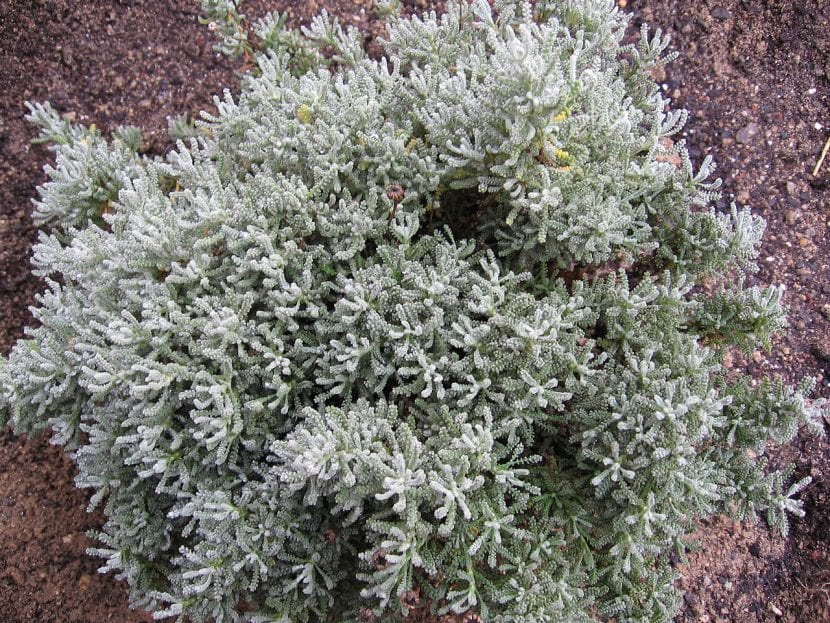
And with this we end the special on santolina. Did you find it interesting?
Interesting article about Santolina, with abundant explanations.
It is a plant that I have seen many times but had not stopped to inquire about it.
Hi Emilio.
That being the case, we are glad that you found it interesting 🙂
Regards!
Interesting. I have had one for years and was not clear about its use. Thanks
Thanks to you, Sonia.
Hello, in my daily walks in the neighborhood where we recently moved I have found this plant, completely new for me. Thanks for the comprehensive explanation. I also have a question. In those walks I have found two plants with very similar flowers, with the exact same smell of the leaves, but the leaves of both are a little different, you know the reason? same family, different variety? Thanks greetings from Seattle, Washington.
Hello Maria.
In order to help you better I would need to see photos of those plants. If you want you can send them to our Facebook.
They may be different varieties.
For the rest, we are glad to know that the article has been useful to you. Greetings!
Hello! Would you tell me what is your Facebook? The info is very interesting!
Hello Cristina.
Thanks. You can find my facebook in Editorial team.
Greetings.
Hi! What would be the "Essence" of santolina that is taken to eliminate internal parasites? Thanks
Hi Mariana.
We refer to the essential oil that is extracted from the plant. But before consuming it, we recommend consulting with a professional.
Greetings.
EXCELLENT!!! I bought it on Thursday, 28/02/2021, I liked the color, it is distinguished from green. I was looking for something that wasn't a big bush, I don't have space; I don't like to have them in pots. I could smell the smell inside the car. The lady did not give me further explanations. Yes, he liked full sun and little watering, once or twice a week was enough. Today Sunday I planted it, next to it is the Spanish Flag ... I think from the photos I saw that the chosen space ... is small. We will see. Ah! And I did hear him say to another lady that she gave "some golden flowers"
Thank you very much for the clarity, brief and punctuality of the given characteristics. I congratulate you.
Hi Mirta.
We are very happy that you liked the note. Santolina is a beautiful plant, and very grateful 🙂
In any case, if at any time you have any questions, you can contact us.
Greetings.
Thank you very much for the information, I have had it planted for years and I did not know its properties.
I have put her flowers in bunches inside the cabinets and it smells very pleasant.
Thanks to you, Arantzazu. Enjoy that fantastic smell 🙂
Thank you very much in advance for the information. It is very beautiful, as well as beneficial
Yes, it is certainly an interesting plant. Regards, Carmen.